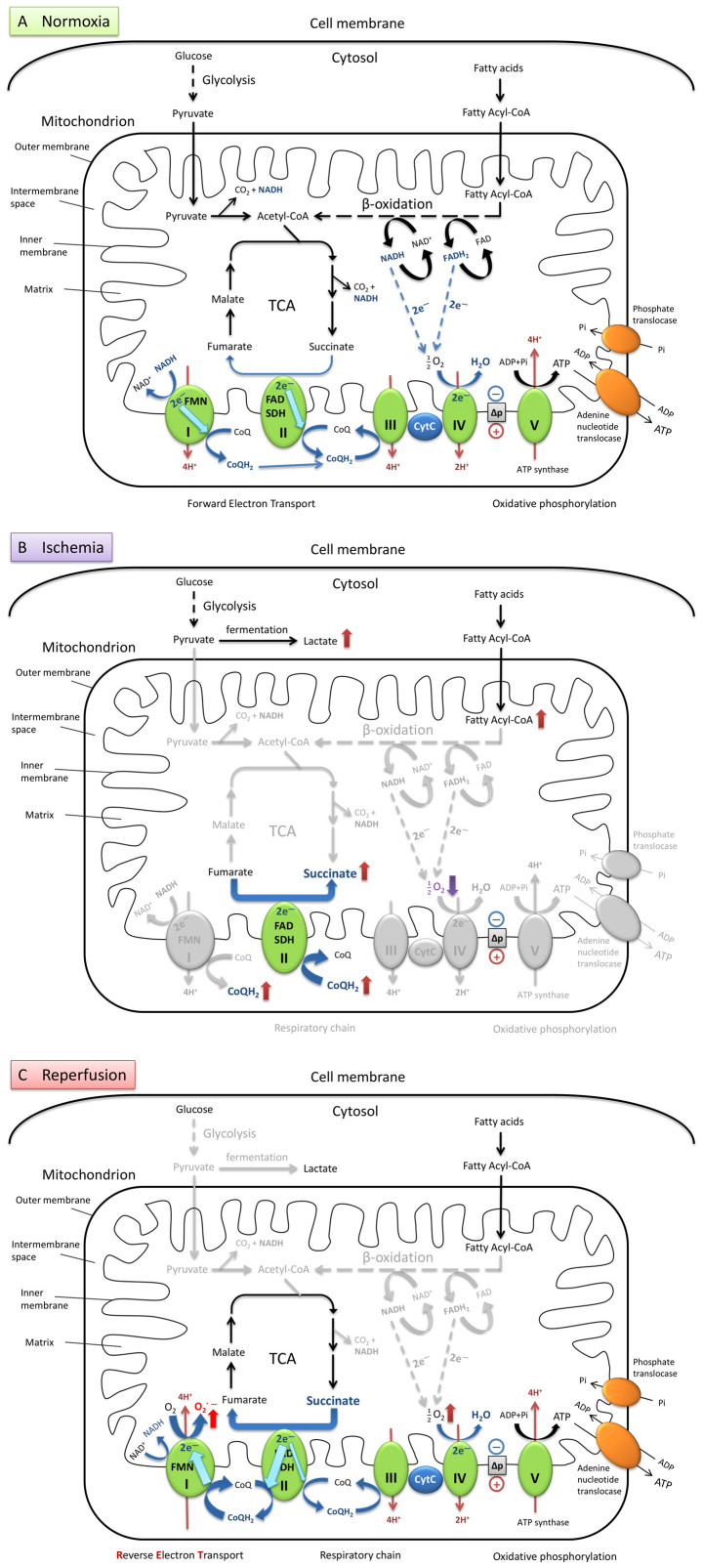Figure 1.
Brief illustration of metabolism via aerobic respiration under normal conditions and the mechanism of mtROS production during ischemia-reper-fusion in heart cells. (A) Under normal oxygen levels, metabolism is balanced by a series of hydrogen and electron transfer reactions in the respiratory chain. (B) During ischemia, the oxygen levels are dramatically decreased, and electron transport flow is diminished. Ubiquinone (CoQ) accepts an electron and transforms into ubiquinol (CoQH2) at complex I. SDH catalyzes the reverse reaction by utilizing the increased levels of CoQH2 to reduce fumarate to succinate. This results in the accumulation of succinate which serves as the final electron sink instead of oxygen. (C) When reperfusion occurs, and oxygen supply is restored, the succinate is rapidly oxidized into fumarate by forward catalysis by SDH. Due to the slow reestablishment of ATP synthesis, the electrons from the excess flux of CoQH2 are forced backward through FMN in complex I. Production of superoxide is significantly increased, generated from oxygen reduction, driven by RET together with the high proton-motive force. mtROS, mitochondrial reactive oxygen species; TCA, tricarboxylic acid cycle; I, complex I; FMN, flavin mononucleotide; II, complex II; SDH, succinate dehydrogenase; FAD, flavin adenine dinucleotide; III, complex III; CytC, cytochrome c; IV, complex IV; V, complex V (also termed ATP synthase).

